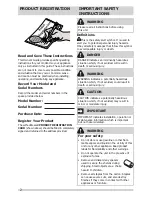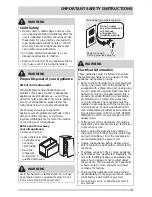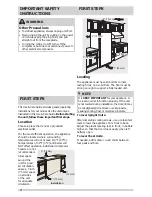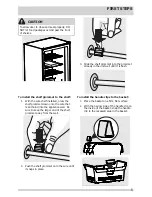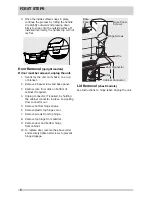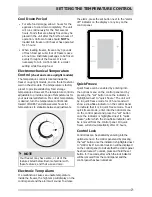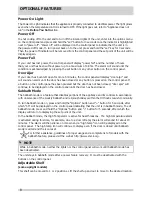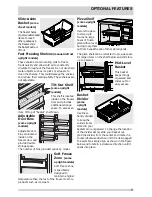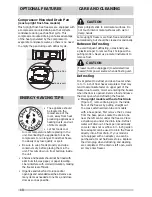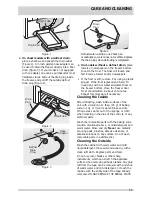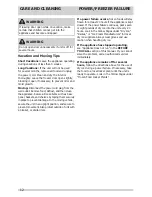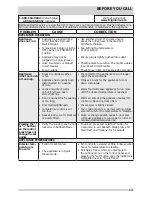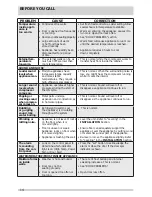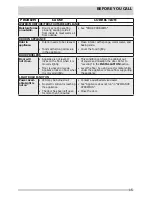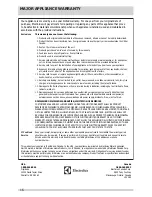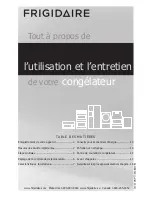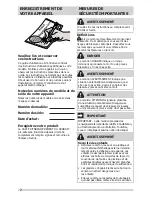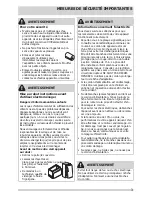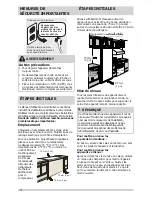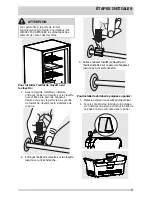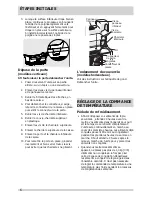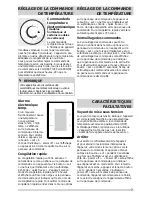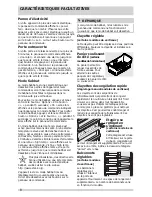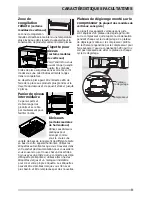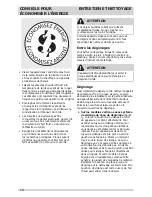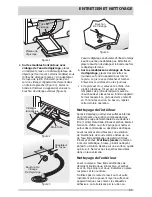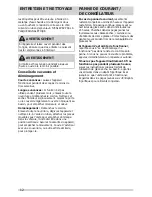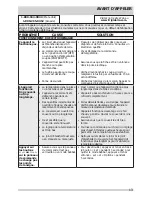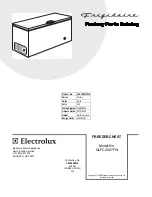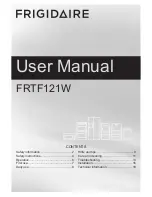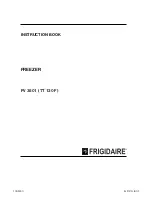
14
PROBLEM
CAUSE
CORRECTION
Temperature
inside appli-
ance is
too warm.
• Control is set too warm.
• Door is opened too frequently
or too long.
• Door may not be seating properly.
• Large amounts of warm
or hot food has been
stored recently.
• Appliance has recently been
disconnected for a period
of time.
• Set fresh food control to a colder setting. Allow
several hours for temperature to stabilize.
• Warm air entering the appliance causes it to
run more Open door less often.
• See “DOOR PROBLEMS” section.
• Warm food will cause appliance to run more
until the desired temperature is reached.
• Appliance requires 4 hours to cool
down completely.
External tem-
perature is
too warm.
• The external walls can be as
much as 30ºF warmer than
room temperature.
• This is normal while the compressor works to
transfer heat from inside the cabinet.
SOUND AND NOISE
Louder sound
levels when
appliance is on.
• Modern appliances have
increased storage capacity
and more stable
temperatures. They require a
high efficiency compressor.
• This is normal. When the surrounding noise is
low, you might hear the compressor running
while it cools the interior.
Longer sound
levels when
compressor
comes on.
• Appliance operates at higher
pressures during the start of
the ON cycle.
• This is normal. Sound will level off or
disappear as appliance continues to run.
Popping or
cracking sound
when compres-
sor comes on.
• Metal parts undergo
expansion and contraction, as
in hot water pipes.
• This is normal. Sound will level off or
disappear as the appliance continues to run.
Bubbling
or gurgling
sound, like
water boiling.
• Refrigerant (used to cool
the appliance) is circulating
throughout the system.
• This is normal.
Vibrating or
rattling noise.
• Appliance is not level. It rocks
on the floor when it is
moved slightly.
• Floor is uneven or weak.
Appliance
rocks on floor when
it is moved slightly.
• Appliance is touching the wall.
• Level the unit. Refer to ”Leveling” in the
INSTALLATION
Section.
•
Ensure floor can adequately support the
appliance. Level the appliance by putting wood
or metal shims under part of the appliance.
• Re-level or move the appliance slightly. Refer
to “Leveling” in the
INSTALLATION
Section.
The alarm
is sounding
from the con-
trol panel
• Look on the control panel to
determine which indicator
light is on (High Temp, Power
Fail, or Door Ajar)
• Press the “set” button to acknowledge the
alarm or close the door if the door ajar
indicator is shown.
WATER/MOISTURE/FROST INSIDE APPLIANCE
Moisture forms
on inside
walls.
• Weather is hot and humid.
• Door may not be
seating properly.
• Door is opened too often or
too long.
• The rate of frost buildup and internal
sweating increases. This is normal.
• See “DOOR PROBLEMS”.
• Open door less often.
BEFORE YOU CALL


